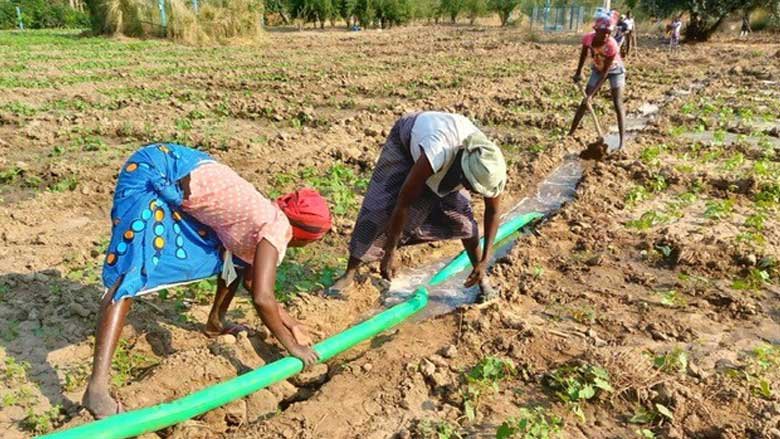Challenge
Angola’s agricultural sector was devastated by the Angolan civil war of 1975–2002, resulting in very low agricultural production and heavy reliance on food imports, sustained by oil revenue. But when oil prices dropped by over 72 percent between March 2014 and March 2016, a fiscal crisis ensued that threatened food security and prompted the government of Angola to accelerate domestic agricultural production. This required addressing key constraints, including its weak capacity for planning and advisory services, limited use of improved agricultural practices and technologies, limited access to modern inputs (including seeds and fertilizers), inadequate market information, and high post-harvest losses.
Approach
The Angola Smallholder Agriculture Development and Commercialization Project’s development objective was to increase smallholder agriculture productivity, production, and marketing for selected crops in the project areas (the central and northern provinces of Bie, Huambo, and Malanje). These provinces, once at the epicenter of the civil war, had great agricultural potential. World Bank involvement brought global experience and knowledge on pro-poor agriculture programs for smallholders. The project launched in 2016 and set up 4,000 Farmer Field Schools (FFSs) to strengthen smallholder farmers’ technical, organizational, and managerial capacities. The Ministry of Agriculture and Forestry (MINAGRIF) relied on technical assistance from the Food and Agriculture Organization of the United Nations (FAO) to implement capacity-building activities that benefited over 150,000 smallholder farmers. These skills development programs were complemented by facilitating farmers’ access to agricultural inputs and markets through a value chain development approach.
Results
Between 2016 and 2022, the project implemented 4,000 FFS, benefiting 179,000 people (of whom 49 percent were women), helping them to increase agricultural productivity, agricultural production, and the proportion of produce sold. The main crops supported by the project were maize, cassava, beans, potatoes, tomatoes, and cabbage. The FFSs were very effective at increasing the ability of small farmers to adopt the new agricultural practices promoted by the project and increasing productivity. In turn, this allowed project beneficiaries to improve their incomes and promoted food security.
- The average crop yield of targeted crops increased by 65 percent to 196 percent compared to the baseline. Compared to project non-beneficiaries, project beneficiaries had higher yields. The yield differentials ranging from 5 percent to 86 percent. The highest yield differential was maize with 86 percent, 67 percent for beans, 63 percent for potatoes, 28% for cassava, and 5% for tomatoes.
- Aggregate crop production increased by 64 percent over the baseline and exceeded project targets by 16 percent.
- The proportion of production sold by smallholder farmers was estimated to have increased from a baseline of 17 percent to 69 percent at project closing.
- Due to substantial increases in productivity, production, and the proportion of production sold, project beneficiaries had created, in total, 240 savings and credit groups by October 2021, with estimated savings amounting to the equivalent of $500, 000.
- As a result of the project’s interventions, the Angolan Government reported increased social expenditure among project beneficiaries (including spending on better housing, children’s education, and transport), as well as the purchase and use of modern agricultural inputs.
Bank Group Contribution
The total project cost was $95 million, of which $20 million equivalent was an in-kind and cash contribution by the government of Angola and $5 million equivalent was in-kind by project beneficiaries mainly coming under matching grants and their improved income from increased sales. A $70 million IBRD loan constituted the remainder of the total project cost.
Partners
FAO was the main partner and provided technical assistance to establish 4,000 FFSs out of the 5,000 planned for the project. The project collaborated with renowned international centers of excellence, namely the International Institute of Tropical Agriculture, International Potato Center, and International Maize and Wheat Improvement Center to acquire improved planting material for local testing (for adaptability), thus expediting innovation.
Looking Ahead
FFS Manuals have been prepared and training provided to Angola’s Agrarian Development Institute at MINAGRIF to help entrench the project’s approach in the country’s agricultural extension delivery systems. The Smallholder Agricultural Transformation Project (MOSAP 3), for $300 million in IBRD financing, was approved by the World Bank in June 2022, and will support Angola in building on the successes of MOSAP2.
